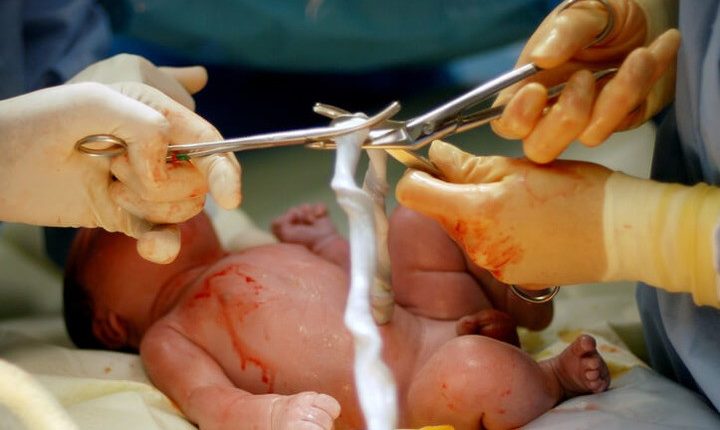
Cord blood, why donate it?
Only 2.5% of new parent couples decide to donate cord blood: the figure, which is Italian, is unfortunately true in several countries around the world
Why is donation important? What is it used for? What are the rules?
Parents who choose to donate umbilical cord blood in Italy are still few, especially after Covid.
Why is this useful and non-invasive practice still so little practised?
Perhaps not everyone knows the important uses of the haemopoietic stem cells contained in cord blood that can be used for transplantation in patients suffering from many haematological diseases such as leukaemia or lymphoma, and from genetic diseases such as Mediterranean anaemia.
CORD BLOOD, HOW MANY DONATE?
An analysis of data in Italy, carried out by the National Blood Centre on the occasion of World Cord Blood Day, reveals that, despite a trend in absolute terms that denotes a slight growth, the percentage figure is still very low.
THE POTENTIAL OF CORD BLOOD
The haemopoietic stem cells found in cord blood, like those found in bone marrow and peripheral blood, are progenitors of all blood cell lines: red blood cells, white blood cells, platelets.
Stem cell transplantation is a well-established life-saving therapy for the treatment of numerous severe congenital and acquired blood diseases, immunodeficiencies and metabolic diseases.
Cord blood donation is therefore of primary interest to the National Health Service and its collection and storage is carried out at umbilical cord blood banks, accredited public facilities designated for this purpose.
HOW THE COLLECTION TAKES PLACE
Cord Blood can only be collected in uncomplicated spontaneous full-term births and in elective caesarean sections, which take place in the absence of medical or obstetric indications, by trained and qualified health personnel.
Harvesting takes only a few minutes and is performed without altering the mode of delivery, after the cord has been severed and the baby has been removed from the operating field and given its due care.
The collection procedure, therefore, poses no risk to either mother or baby and involves depositing the blood in a special sterile bag.
The unit is then transferred to the Cord Blood Bank and undergoes a series of checks and tests to define the characteristics of the blood collected and establish its suitability for storage and therapeutic use.
Cord Blood can be collected for various purposes
- donation for solidarity purposes;
- dedicated to a newborn child with a pathology in progress at the time of birth or revealed prenatally, or for use dedicated to a blood relative with a pathology in progress at the time of collection or previous, which is curable with a haematopoietic stem cell transplant;
- dedicated to families at risk of having children affected by genetically determined diseases for which there is proven scientific evidence of use of Cord Blood Stem Cells;
- for autologous use, i.e. taken from a person and applied to the same, dedicated within the framework of clinical trials, approved in accordance with the regulations in force, aimed at gathering scientific evidence of a possible use of cord blood in the case of particular pathologies.
CORD BLOOD, WHAT IS PROHIBITED
- The storage for autologous use only in the absence of particular pathologies;
- The establishment of private banks on national territory;
- any form of advertising related to private banks
However, the collection of Cord Blood for personal use and its export to private facilities outside the Italian territory is allowed according to the rules defined by a specific regulatory act.
Read Also
Emergency Live Even More…Live: Download The New Free App Of Your Newspaper For IOS And Android
Umbilical Cord: What Is It, What Is It For, What Does It Contain?
Placenta Previa: Definition, Causes, Risk Factors, Symptoms, Classification
Main Diseases Of The Umbilical Cord: What They Are
The Stages Of Childbirth, From Labour To Birth
APGAR Test And Score: Assessing The Health Status Of An Newborn
Why Are Hiccups So Common In Newborns And How Can They Be Overcome?
Seizures In The Neonate: An Emergency That Needs To Be Addressed
Emergency-Urgency Interventions: Management Of Labor Complications
What Is Transient Tachypnoea Of The Newborn, Or Neonatal Wet Lung Syndrome?
Tachypnoea: Meaning And Pathologies Associated With Increased Frequency Of Respiratory Acts
Postpartum Depression: How To Recognise The First Symptoms And Overcome It
Postpartum Psychosis: Knowing It To Know How To Deal With It
Childbirth And Emergency: Postpartum Complications
European Resuscitation Council (ERC), The 2021 Guidelines: BLS – Basic Life Support
Pre-Hospital Seizure Management In Paediatric Patients: Guidelines Using GRADE Methodology / PDF
New Epilepsy Warning Device Could Save Thousands Of Lives
Understanding Seizures And Epilepsy
First Aid And Epilepsy: How To Recognise A Seizure And Help A Patient
Childhood Epilepsy: How To Deal With Your Child?
Epileptic Seizures: How To Recognise Them And What To Do
Congenital Heart Disease And Safe Pregnancy: The Importance Of Being Followed From Before Conception
Umbilical Cord: Donation And Preservation



